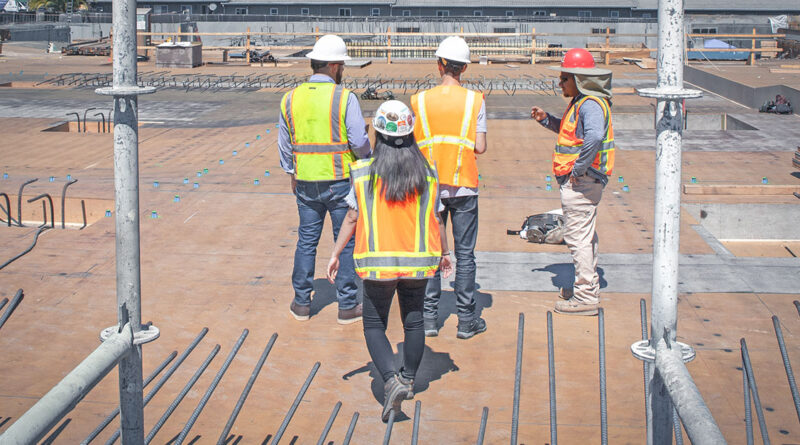Simplified Construction: Strategies for Streamlining Projects
In today’s fast-paced construction industry, time is of the essence and delays can be costly. With overlapping deadlines, tight budgets, and unexpected challenges, it’s crucial to streamline your construction projects to ensure they are completed efficiently and on schedule.
Streamlining a construction project involves optimizing processes, reducing waste, and improving efficiency. By implementing these strategies, you can simplify your construction projects and improve overall productivity.
Pre-Construction Planning
The first step to streamlining your project is to have a solid plan in place before breaking ground. This includes conducting thorough site evaluations, performing feasibility studies, and creating detailed project timelines.
Site evaluations help determine potential obstacles that may arise during the construction process such as environmental restrictions, soil conditions, or existing structures that need to be accounted for. This information can then be used to make necessary adjustments to the project plan.
Feasibility studies help assess the viability of a construction project by analyzing factors such as cost, time, and resources. By conducting these studies beforehand, potential issues can be identified and addressed before they become bigger problems during construction.
Having a detailed project timeline is crucial for keeping the project on track. This includes setting realistic deadlines, identifying critical tasks, and assigning responsibilities to team members. With a clear plan in place, everyone involved in the project knows their role and can work towards meeting specific milestones.
Utilizing Technology
Technology has revolutionized the construction industry, making it easier to streamline projects and improve communication between team members. By utilizing construction software, project managers can track progress, monitor budgets, and communicate with team members in real time.
Project management software also allows for better collaboration by providing a centralized platform for sharing documents and updates. This eliminates the need for back-and-forth emails or phone calls and ensures everyone is on the same page at all times.
In addition, technology such as Building Information Modeling (BIM) can help streamline the design and planning process by creating detailed 3D models of the project. This allows for better visualization and identification of potential issues before construction even begins.
Investing in proper equipment
Investing in proper equipment can be a game-changer when it comes to streamlined construction projects. For instance, crane rental can save both time and labor costs by efficiently moving heavy materials. However, it’s not just about having the equipment on hand. It’s also important to ensure that the equipment is up-to-date and well-maintained to prevent downtime and delays.
By making sure that the proper tools are available and in good condition, construction teams can work smarter, not harder, and stay on schedule. With the right equipment, construction projects can be executed smoothly and efficiently, leaving everyone involved feeling satisfied with a job well done.
Implementing Lean Construction Principles
Lean construction is a philosophy that focuses on eliminating waste and maximizing value in a construction project. By implementing lean principles, projects can be completed more efficiently and with fewer resources.
One of the key principles of lean construction is continuous improvement. This involves regularly reviewing processes and identifying areas for improvement. By continuously striving to eliminate waste and improve efficiency, projects can become even more streamlined over time.
Another important principle is the utilization of just-in-time (JIT) delivery. This involves ordering materials only as needed, reducing the amount of excess inventory and the associated costs. JIT delivery also helps avoid delays caused by waiting for materials to arrive.
Prioritizing Safety
While streamlining a construction project may be focused on improving efficiency, it’s important not to overlook safety. Prioritizing safety can help streamline projects by reducing accidents and injuries that could cause delays.
Having a comprehensive safety plan in place and regularly conducting safety meetings can help prevent accidents and ensure everyone on the project is aware of potential hazards. This, in turn, can help keep the project on schedule and minimize disruptions caused by injuries.
Maintaining Communication
Effective communication is key to streamlining any construction project. By maintaining open lines of communication between team members, issues can be addressed quickly and efficiently.
Regular project meetings should be held to discuss progress, address any concerns or challenges, and make necessary adjustments to the project plan. This ensures everyone is on the same page and working towards the same goal.
In addition, project managers need to maintain communication with stakeholders such as clients, subcontractors, and suppliers. By keeping all parties informed and involved, potential delays or issues can be addressed promptly.
Conclusion
Streamlining a construction project involves careful planning, effective communication, and utilizing technology and lean principles. By implementing these strategies, projects can be completed more efficiently, on schedule, and within budget. Prioritizing safety and continuously seeking ways to improve processes can also help streamline future projects.
With streamlined construction projects, companies can increase productivity and stay ahead of the competition in today’s fast-paced construction industry. So why not start implementing these strategies in your next project to see the benefits for yourself?




